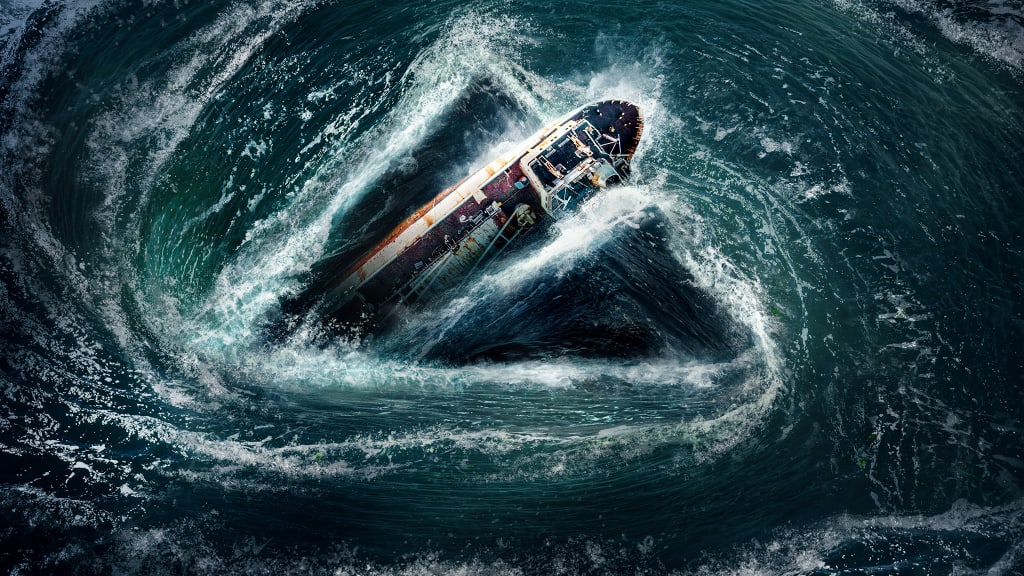The TERRIFYING Truth Behind Bermuda Triangle Disappearances
History

Introduction to the Bermuda Triangle
The Bermuda Triangle, also known as the Devil's Triangle, is a loosely defined region in the western part of the North Atlantic Ocean. Its vertices are typically considered to be Miami, Bermuda, and Puerto Rico. This area has been infamous for an unusually high number of aircraft and ship disappearances, leading to a plethora of theories and speculation. The term "Bermuda Triangle" was first coined by writer Vincent Gaddis in 1964, and since then, the area has become synonymous with mystery and fear.
Notable Disappearances
Over the decades, the Bermuda Triangle has been linked to numerous high-profile disappearances, each adding to its mystique.
Flight 19: Perhaps the most famous incident occurred on December 5, 1945, when five US Navy Avenger torpedo bombers, known as Flight 19, vanished during a routine training mission. Despite extensive search efforts, no trace of the aircraft or their 14 crew members was ever found. Adding to the mystery, a rescue plane sent to find them also disappeared.
USS Cyclops: In March 1918, the USS Cyclops, a massive Navy cargo ship, vanished without a distress signal along with its 309 crew members. The ship was en route from Barbados to Baltimore and was never seen again, despite one of the largest naval search efforts in history.
DC-3 Airliner: On December 28, 1948, a DC-3 airliner with 32 people on board disappeared while en route from Puerto Rico to Miami. No wreckage or remains were ever found, despite an extensive search.
Theories and Explanations
The disappearances in the Bermuda Triangle have led to numerous theories, ranging from scientific explanations to the more fantastical.
Human Error: The simplest and most plausible explanation for many of the disappearances is human error. The Bermuda Triangle is one of the busiest shipping and flight routes in the world, and navigational errors, poor weather conditions, and mechanical failures could easily account for many incidents.
Methane Hydrates: Some scientists suggest that large undersea deposits of methane hydrates could be responsible for ship sinkings. If a large amount of methane is suddenly released, it could reduce the density of the water, causing ships to sink rapidly without warning.
Compass Variations: The Bermuda Triangle is one of the few places on Earth where true north and magnetic north line up, which can cause navigational anomalies. This could potentially confuse pilots and captains, leading to tragic accidents.
Rogue Waves: Rogue waves, which are massive and unexpected ocean waves, can reach heights of up to 100 feet. These waves have been known to sink large ships quickly and without warning, possibly explaining some of the disappearances.
Supernatural Explanations: Numerous supernatural theories have been proposed, including alien abductions, time warps, and the lost city of Atlantis. While these theories are popular in fiction and media, they lack any scientific evidence.
Scientific Investigations
Despite the multitude of theories, scientific investigations into the Bermuda Triangle have generally concluded that there is no single cause behind the disappearances. Many studies suggest that the incidents in the Bermuda Triangle are not significantly higher than in other heavily traveled regions of the world.
Statistical Analysis: Research has shown that the number of incidents in the Bermuda Triangle is proportionate to the amount of traffic passing through it. The area sees a high volume of maritime and air traffic, increasing the likelihood of accidents and disappearances.
Weather Patterns: The Bermuda Triangle is subject to volatile weather patterns, including hurricanes and tropical storms, which can contribute to the high incidence of disappearances. Sudden and severe weather changes can catch vessels and aircraft off guard, leading to tragic outcomes.
U.S. Coast Guard: The U.S. Coast Guard does not recognize the Bermuda Triangle as an official danger zone. They attribute the incidents to the combination of environmental factors and human error, emphasizing that the ocean has always been a place of mystery and danger.
Legacy and Cultural Impact
The Bermuda Triangle has cemented its place in popular culture, inspiring countless books, movies, documentaries, and television shows. Its reputation as a mysterious and dangerous place continues to captivate the public imagination.
Literary and Media Influence: The Bermuda Triangle has been a popular topic in science fiction and adventure genres. Works such as "The Bermuda Triangle" by Charles Berlitz and various episodes of shows like "In Search Of" have kept the mystery alive in the public eye.
Tourism: Despite its ominous reputation, or perhaps because of it, the Bermuda Triangle attracts tourists and thrill-seekers. Cruises and tours offer a chance to explore the region and learn about its history and legends.
Enduring Mystery: The Bermuda Triangle remains a topic of intrigue and debate. While scientific explanations may debunk many of the myths, the area continues to symbolize the unknown and the potential dangers of the sea and sky.
Conclusion
The Bermuda Triangle, with its history of unexplained disappearances and mysterious occurrences, continues to fascinate and terrify. While scientific research has provided plausible explanations for many of the incidents, the allure of the unknown keeps the legend alive. As long as the Bermuda Triangle remains a hotspot for maritime and aviation activity, it will continue to be a source of speculation, fear, and fascination.
About the Creator
Marveline Merab
“History never repeats itself. Man always does.”
― Voltaire
Enjoyed the story? Support the Creator.
Subscribe for free to receive all their stories in your feed. You could also pledge your support or give them a one-off tip, letting them know you appreciate their work.






Comments
There are no comments for this story
Be the first to respond and start the conversation.